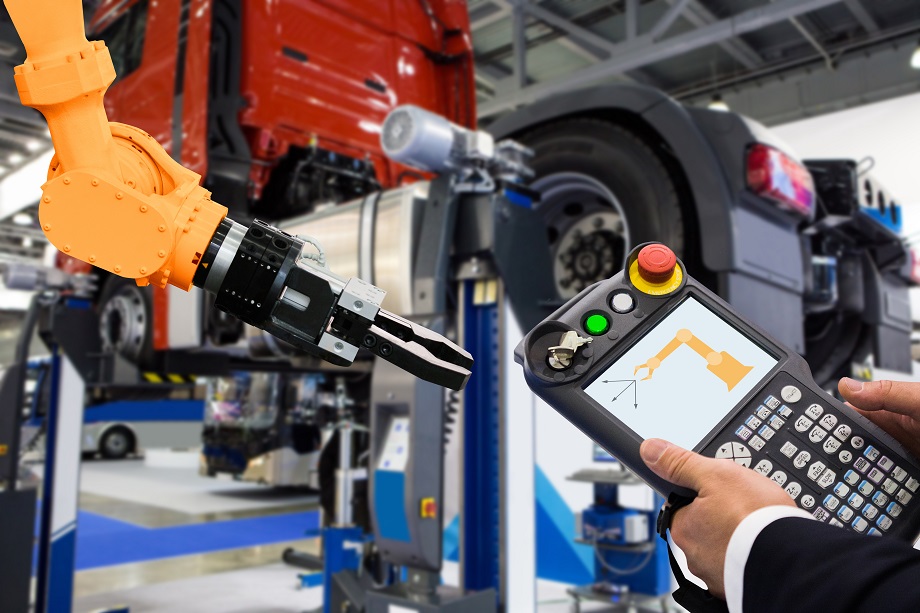
Process control innovations are continuously transforming the industrial landscape. With the introduction of new technologies and machine learning algorithms, industries have evolved from manual to automated processes, resulting in higher efficiency, productivity, and throughput.
Process innovation refers to making a process more efficient and effective. Some significant process innovations include Henry Ford’s assembly lines, computer-aided design, robotics, and artificial intelligence (AI). The latest advancements in process technology lean toward more autonomous operations in production, assembly, packaging, and warehousing.
Cutting-edge advancements in process control are revolutionizing industries on a global scale. Studies show that companies that don’t make automation and innovation top priorities will fall behind their competition.
Process Control Innovations: Hyper Automation Is the Ultimate Goal
Automation is designed to streamline repetitive tasks to reduce the need for traditional human interaction. Hyper Automation goes beyond this process to use advanced technology that adds intelligent processing.
Hyper Automation combines artificial intelligence, machine learning, robotic processes, and other advanced technologies. Its purpose is to streamline and automate every possible process in an organization to make it more efficient. Businesses can automate manual workflows and extract value from them with this advancement.
To better understand the goal of hyperautomation, we need to know more about its components that are navigating towards autonomous operations, including:
- Artificial Intelligence
- Machine Learning
- Robotic Processes
- Harmonious Connectivity
- Adaptive Control
Each of these components has gone from potential tools to reality in revolutionizing global industries. The next few years will see them evolve into even more effective tools for process control.
Why Artificial Intelligence Is Necessary
Artificial intelligence has come a long way since its initial inception. The use of AI provides advanced monitoring, improved production, and tighter quality control in factory and processing facilities. To close AI gaps in manufacturing, companies use these advancements to make AI more accessible and workable for processing and operation challenges:
- Generative AI uses deep-learning models to generate high-quality text, images, and other content for manufacturing. It also identifies patterns and structures within existing data to generate new and original ideas.
- Data-centric AI systematically engineers data to build an AI system that focuses on data instead of code. It positions data as a core fixed asset that does not change with the type of technology used in production and processing.
- Synthetic Data is computer-generated information to augment or replace real data. Its function is to improve AI models, protect sensitive data, and mitigate bias. One of this data’s key benefits is that it comes pre-labeled and identified to focus on specific process control activities.
AI innovations are necessary for companies to remain competitive on a global scale.
| “Studies show that companies that don’t make automation and innovation top priorities will fall behind their competition.” |
Process Control Innovations: Machine Learning
Yes, machines do learn to adapt to manufacturing and processing operations. Closely associated with AI, machine learning is indispensable in virtually all industries. It provides specific benefits for manufacturing enterprises that include:
- Increased capacity by optimizing production processes
- Reduces process-driven losses such as lower quality, less yield, and waste
- Reduces cost through predictive maintenance of equipment
- Improved supply chain management and distribution
- Improved human-robot collaboration and interaction
- Intelligence to alert technicians when quality needs to improve
Machine learning helps to find the hidden origination of losses caused by process inefficiencies that may otherwise be overlooked. Automated alerts and recommendations let production teams, engineers, and technicians know there is an impending problem. Machine learning can seamlessly share knowledge about how to prevent losses and other issues before they occur.
Robotic Processes Play a Growing Role in Autonomous Operations
 Many businesses and industries are successfully using robotic process automation (RPA) to automate simple and time-consuming manual tasks. The major challenge that companies face is automating processes with high variability or frequent changes during manufacturing or processing.
Many businesses and industries are successfully using robotic process automation (RPA) to automate simple and time-consuming manual tasks. The major challenge that companies face is automating processes with high variability or frequent changes during manufacturing or processing.
RPA significantly helps manufacturing and processing facilities enhance efficiency by reducing human errors. Automation can also be applied to manage administrative tasks that allow employees to focus on higher-value activities. The benefits of using RPA include:
- Significant operational cost savings each year
- Offset labor shortages year-round
- Improved processing efficiency
- Reduce wastage and human errors
- Improve back office operations such as invoice processing
Robotic processes play a growing role in autonomous operations as they take on more human activities. The future of RPA will be developed in more company departments to improve business operations and revolutionize more industries.
In Summary
Process technologies are becoming cheaper, more capable, and more flexible. We see the accelerated growth of fully automated production facilities on a global scale. The key challenges are based on how to best harness their abilities and power. Contact ITI Technical College today to learn more about our Process Technology (AOS) Program.
For more information about graduation rates, the median debt of students who completed the program, and other important information, please visit our website: https://www.iticollege.edu/disclosures





